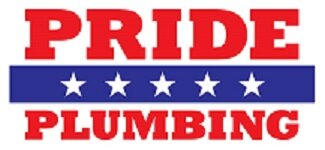Shower Valves
Rochester Shower Valve Installation
A Relaxing Shower Every Time
Have you ever been enjoying a nice warm shower when all of a sudden, the water turns shockingly cold? Even worse, someone flushes a toilet and the shower becomes unbearably hot? Eliminate these major and potentially harmful temperature fluctuations by installing a high-quality and functional shower valve.
As your trusted bathroom plumbers, Pride Plumbing of Rochester proudly offers an array of anti-scald shower valves including:
Thermostatic mixing valves
Pressure-balance valves
We can explain the pros and cons of each of your options to make choosing a valve as easy as possible. When you’ve selected the shower valve that is right for your needs and budget, we will schedule an installation quickly and ensure a job done right.
Ready to schedule service? Give one of our customer care representative a call at (585) 271-7150, or request an appointment online by submitting the Service Request Form.
Importance of Anti-Scald Shower Valves
Every year, thousands of people suffer injury as a result of surprising water temperature fluctuation. A common source of injury is slipping and falling in the shower as a reaction to the sudden increase or decrease in water temperature. An anti-scald valve will prevent burn injuries.
This is a particular risk to:
Young children
Older Adults
People with disabilities
These groups may be at a higher risk due to tender skin and slower reaction time.
Legionnaires’ Disease
An anti-scald valve is a helpful tool to store the water at a temperature to avoid bacteria growth while also delivering shower water to the user at an appropriate temperature. Legionella bacteria are responsible for Legionnaires’ Disease and Pontiac Fever and thrive in temperatures between 95-115 °F. It is common to maintain the hot water tank temperature at 140 °F because the legionella bacteria cannot live in a temperature above 131 °F.
Why Shower Temperatures Fluctuate
To achieve your ideal shower temperature, you are using a combination of hot and cold water. Since toilets only use cold water, flushing the toilet can cause the cold water to temporarily siphon from the shower to allow the toilet bowl to refill. The shower then gets extremely hot since there is less cold water available to mix with the hot water to create your perfect temperature. On the other hand, the water may become shockingly cold if someone is using hot water, such as from the dishwasher or washing machine, since hot water is being taken away from the shower to be used for other household appliances.
Thermostatic Mixing Valves
A thermostatic mixing valve, also known as a shower mixing valve, senses the actual temperature of the water coming into the shower. It mixes hot water with cold water to provide a safe, accurate, and constant flow of temperature-controlled water. Regardless of how the supply temperatures or pressures vary over the time of use, the temperature will remain nearly exactly the same as desired. If cold water is reduced due to a toilet flushing, for example, the valve will automatically adjust the amount of hot and cold water to keep the temperature consistent and safe.
Do You Need a Pressure-Balance Valve?
A pressure-balance valve uses just one handle to control the volume and temperature by sensing and adjusting the ratio of hot and cold water. When someone in your home flushes the toilet, the valve reacts to the change in water pressure and will reduce or cut off the hot water supply, maintaining the balance between hot- and cold-water flow. The temperature may only fluctuate a couple of degrees, likely unnoticeable by the user.
To learn more about your shower valve options, contact Pride Plumbing of Rochester at (585) 271-7150.
FAQ
It depends on your preference and budget. Below are some pros and cons of each valve:
Thermostatic mixing valve
- Pros: A maximum output temperature is set on the valve, so if you want your hot shower to be exactly 100 degrees every time, it has that temperature memory and will not go any higher than 100 degrees. Water conservation is easy because you can change the flow volume without affecting the temperature. This also means there is increase energy-efficiency. Your water heater can be set to 140 degrees, but you can still have absolute control over your shower.
- Cons: They are more expensive and can only protect one fixture
- Pros: They can have a lower initial cost, they provide scald protection, and they provide moderate comfort.
- Cons: They have no temperature memory, you have to fiddle with knobs to achieve your desired temperature, and they have no additional scald protection.


